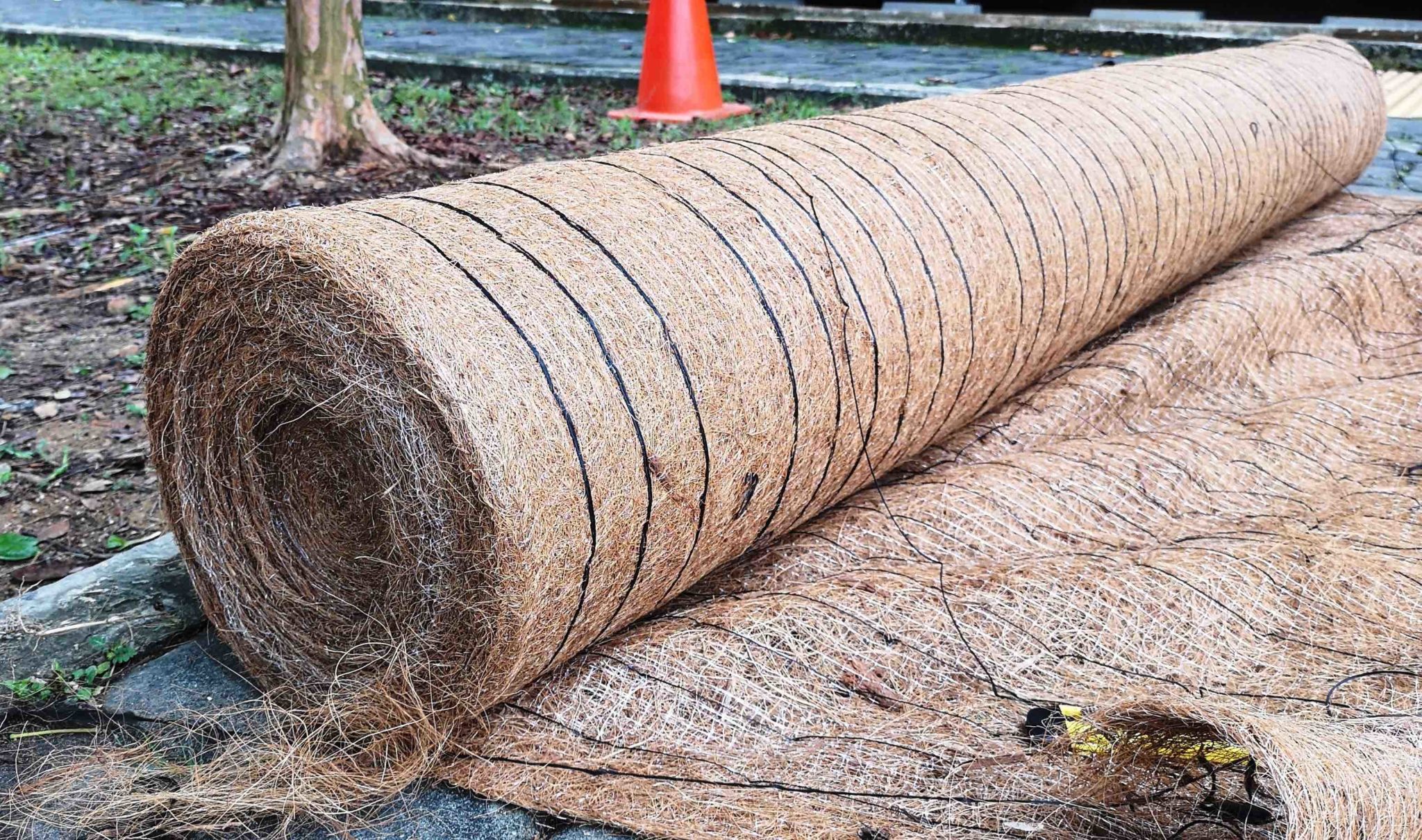
There exists a variety of erosion control products varying from geotextiles produced from natural or synthetic fibers, concrete, bituminous treated roving, seed and sod, wood mulch and soil binders. Of the options available it is important to understand them from a biodegradable and non-biodegradable perspective with the former typical of erosion control matting. Erosion control matting is a rolled erosion control product utilized to reduce soil erosion and assist in the growth, establishment and protection of vegetation. The types of rolled erosion control products include mulch control netting or erosion control net, open weave textiles, erosion control blanket all three which tend to be temporary measures, but the focal point of our discussion will highlight in more detail the permanent erosion control measures utilizing erosion control matting. This article will define what is erosion control matting, where can it be used as well as what complementary or alternative technologies offered by Global Road Technology.
Quality matters
An erosion control matting is a rolled erosion product consisting of non-biodegradable synthetic fibers, porous, self-supporting reinforced filaments, nets, wire mesh and or other components processed into a permanent three-dimensional matrix of sufficient thickness. Given the commercial competitiveness of the products available on the market standard test protocols would be significant to evaluate properties of erosion control mats. Given below are some of the standard tests utilized:
The components of erosion control matting are often chemical and UV resistant, but the synthetic matrix allows for vegetative growth through the structure and over time the plant and its roots grow through the matrix of providing interlocking with the soil which increases resistance to high shear stresses from and water flow and reduces erosion. Erosion control mats provide an attractive alternative to concrete because they allow for infiltration of surface water and are not prone to undercutting at edges and joints which poses safety hazards for construction workers.
Limitations
The limitations in use of erosion control matting lies in the complexity that arises from the erosion control matting/soil/water interaction given also the variety of erosion control mats which makes the process of the selection of the most appropriate product very challenging. Whilst we mention the limitations, it would be important to provide a bit more context given the importance of understanding the possibilities and potential uses of erosion control matting. The interaction between the erosion control materials, hydraulic loading and soil types requires guidance and direction from quantitative comparisons amongst available properties of erosion control mats available for selection. In some instances, erosion control matting elements can also consist of degradable components which play the role of imparting immediate erosion protection, enhance vegetation establishment and provide long term functionality by permanently reinforcing vegetation during and after maturation. Erosion control mats are typically used in hydraulic applications such as high flow ditches and channels, steep slopes, stream banks and shorelines where erosive forces may exceed the limits of natural, unreinforced vegetation or in areas where limited vegetation establishment is expected.
Installation considerations
Additional considerations to selection of erosion control matting include the time to establish vegetation, which varies from a year to three years. Categorically the scale from good to poor is determined as follows:
Installation of erosion control matting is an important technique used as a restoration process to aid seedling in the alpine a tradition, which dates back to the mid 19th century. Erosion control matting provides a microclimate for seedling establishment reducing wind and increasing seedling germination by as much as five to six times relative to seedling without matting. Erosion control matting also reduces erosions from the splash of rain, which can disrupt the establishment of new vegetation. Erosion control matting finds its use in temporary reinforcement in dikes, shorelines, beaches, dams, roadside batters and embankments, stream banks and canals to prevent washing or erosion of sand, soil, turf just to mention but a few.
Industry best practice
Predominantly, erosion control matting consists of either long-term, non-biodegradable elements or shorter terms by biodegradable elements that aid in growth of vegetative cover important for the early control of soil erosion as a result of runoff. Applications of erosion control matting vary from mining operations, dams, shore linings, slopes on roads and including other examples. Global Road Technology offers GRT: Enviro-Binder and GRT Nature Plus, specially formulated liquid polymer and highly effective source of phosphorus and nitrogen, which are key in revegetation projects as it increases germination and strike rate. These products provide the benefits that erosion control blankets can provide, however as there is 100% direct soil contact, you avoid undermining of blankets that often occurs. Because GRT: Enviro-Binder and Nature Plus are hydraulically applied, they are cost effective, much quicker and also much safer to apply on slopes and difficult terrain. On consultation with the Global Road Technology the team will assess the site conditions and offer the best solutions for what combination technology is best suited to use with or instead of erosion control matting.
Your feedback is important to us. If you enjoyed reading this Global Road Technology industry update and found it informative, please let us know by leaving a REVIEW.
REFERENCES